The Ramírez-Sosa brothers are students at Lively Middle and Perez Elementary schools. Their mother has just finished her last chemotherapy treatment after a recent cancer diagnosis. Silas and Emil could have been celebrating with their family, but instead, the Ramírez-Sosa brothers were among the youngest protesters that rallied at the AISD office building on Saturday, Sept. 26. Their mother is Caroline Sweet, a teacher at Perez Elementary School. They are worried that so soon after winning a battle with cancer, she will have to put her life on the line as a school teacher during a global pandemic.
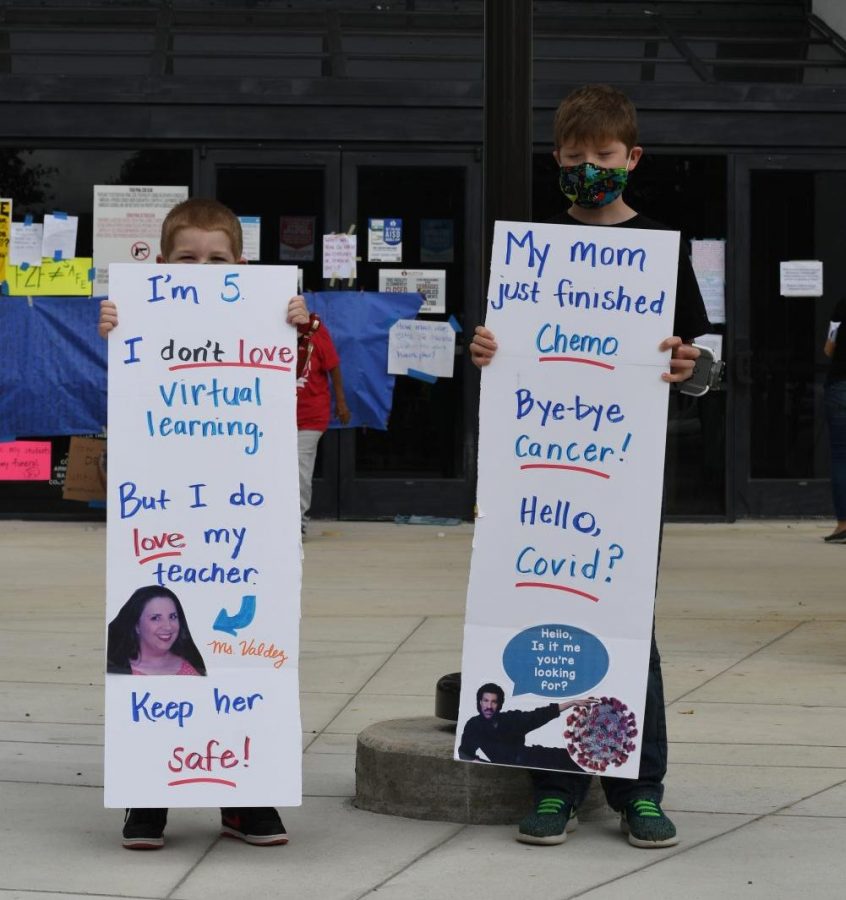
This sentiment was echoed by a full parking lot of AISD staff and community members that gathered at the district headquarters to post questions and demands they had regarding the re-opening of district schools and the district’s response to the threat of COVID-19. The rally, organized by Education Austin, began at Burger Stadium and Nelson Field, where cars then caravanned to the district’s Southfield headquarters.
Ken Zarifis, the president of Education Austin, explained that the purpose of the rally was to provide a platform where staff members directly affected by the re-openings could make their voices heard.
“The union is 3,000 employees of the school district…that’s teachers, TAs, bus drivers, custodians,” Zarifis said. “It’s the loudest employee voice in the district, and I think the superintendent and the school board would be well served to listen.”
A lack of teacher inclusion in the process of AISD decision making was one central concern voiced at the rally.
“I feel like a veteran teacher, who has taught here for 20 years. We’re the ones that should have been talked to,” said Kelly Greene, a teacher at Travis Early College High School. “We’re the professionals, we’re on the front line. We had a reopening crew, but I don’t know a single one of my veteran teachers at Travis High School that was asked to put in any input.”
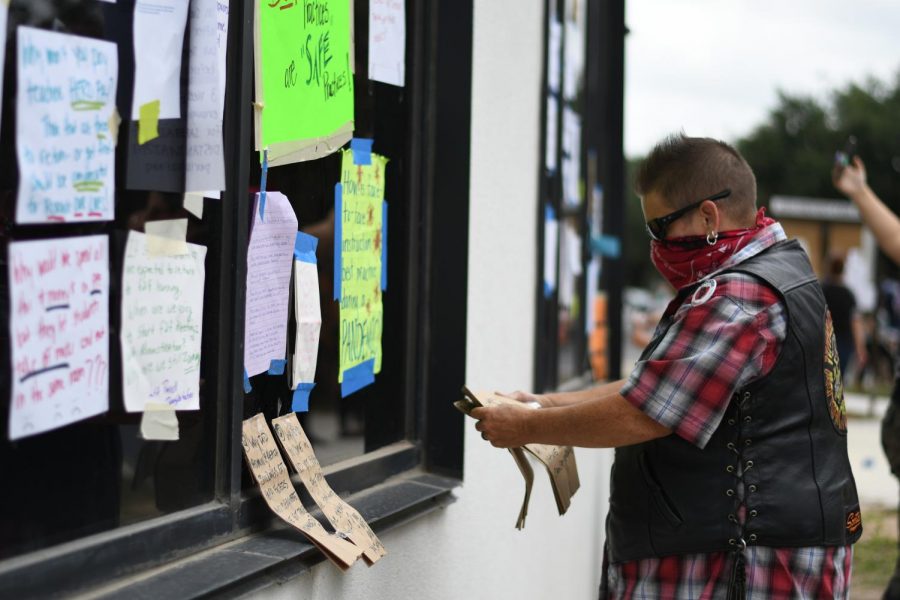
Mario Peña, a teacher at Paredes Middle School, echoed the call for the district to take into account teachers’ perspectives. Not only are teachers able to provide valuable recommendations to help shape school re-openings, but Peña also stressed the importance of uplifting voices from all around the district, especially to ensure the representation of schools with a lower socioeconomic status.
“A one-size-fits-all (approach) doesn’t work,” Peña said. “Our black and brown kids are always disproportionately underrepresented. They’re kind of a second thought when it comes to education, and if you look at the data, black and brown people are the ones that are being hit the most with COVID. More teacher voices in lower SES schools is extremely vital because a lot of people that we hear live in neighborhoods that have more of a means and more of a privilege. Our schools that suffer the most are the schools that don’t have a voice.”
Along with requesting more transparency and a greater staff involvement in the district’s decision-making process, an overwhelming majority of the rally’s attendees also favored continuing online learning for the safety of students and staff.
In order to continue with at-home learning in an effective and equitable way as possible, Zarifis recommended that the district continue to work to provide consistent technology and resources to students in need.
“Our schools that suffer the most are the schools that don’t have a voice”
— Mario Peña
“Those who have the hot spots and are relying on busses in their neighborhoods, that’s inequitable,” Zarifis said. “The hot spots don’t hold up long enough, they’re spotty. We need to look at these things and invest where we know we haven’t invested enough. If we don’t address it now, in the middle of the most outrageous health issue in the last 100 years, then when are we going to do it?”
Zarifis said that continuing with at-home learning also means standing up to the Texas Education Administration, and risking state funding cuts, but he insisted that AISD needs to do this and more, in order keep students and staff safe.
“[AISD] wants to rush in because they’re worried about losing funding on the bottom line,” Zarifis said. “I say stand up to the bully [TEA Commissioner] Mike Morath and the … commission and say, ‘No you’re not going to take our money. It’s our money,’” Zarifis said. “They shouldn’t be making the decisions. The workers should, not the bosses. We’re the ones that are experiencing it. We’re the ones that are living it every day.”
Health accommodations are only available to staff members who are at high risk, and even then, requests may not be approved by the district. Staff members with high-risk family members, or staff that don’t feel comfortable putting their children into child care while they return to school do not qualify for accommodations.
Caroline Sweet was granted a health accommodation to work at home, and her sons Silas and Emil will continue with online learning. She is still worried, however, about a January reopening if COVID rates in Texas have not fallen, and called for AISD to make decisions centered around science and data.
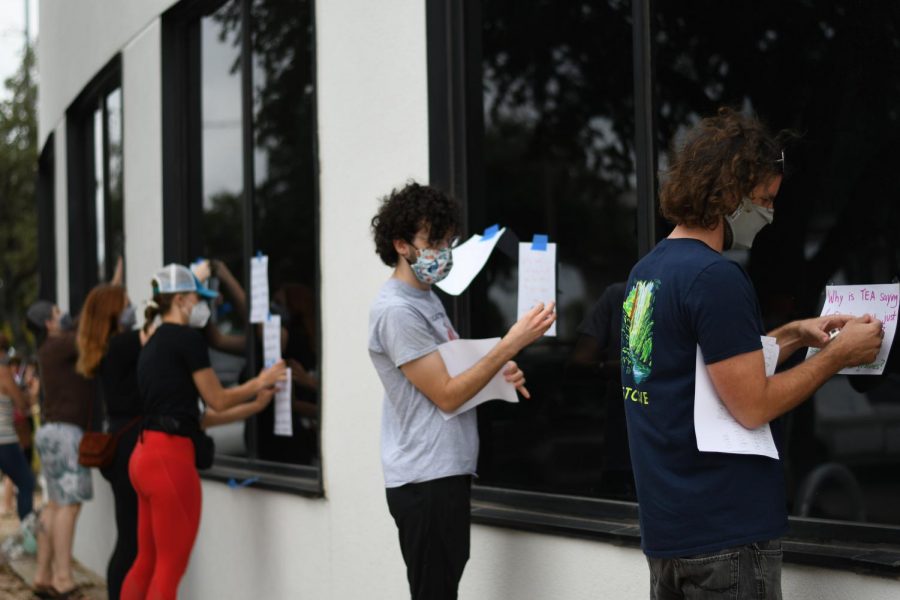
AISD teachers will be required to return to on-campus teaching on Oct. 5, where students who need in-person schooling will continue with virtual curriculum in controlled, socially-distanced stationary learning groups. All students get a choice of whether to go back to the campus, continue at-home learning, or do a hybrid mix of both virtual and in-person learning, but unless all staff members, unless they are granted a health accommodation from the district, will report to campus and support online education from their classrooms, while some will also supervise learning groups.
Despite her need for an accommodation, McCallum librarian Jain Thompson doesn’t qualify for one. Her son is high-risk, and Thompson fears that returning to school will put her family in danger.
“If I’m forced to supervise a pod, I can’t do it. It’s not safe,” Thompson said. “That’s just the science, and it’s really infuriating that they’re not acknowledging that. Our students and their families get a choice over whether or not to come back to school, but what about their teachers?”
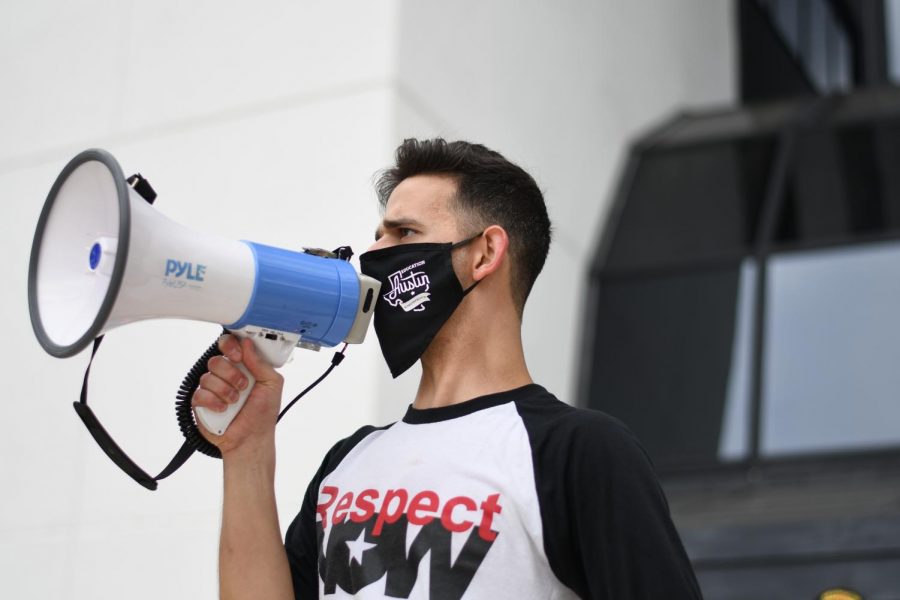
Not only does she feel forced into an impossible choice by the district, but Thompson also feels that there isn’t enough done to ensure the safety of students and staff going back to school on Oct. 5.
“Right now that’s my biggest worry, having to supervise. The school’s not ventilated. The library, all the books have mold on them since there’s no AC. The CDC says, ‘Don’t be in closed, poorly ventilated spaces.’ Well, you just described my workplace!”
Greene voiced similar concerns, citing that Travis Early College High School wasn’t held to the safety standards students and staff deserve.
“We see no information,” Greene said. “Admin (offices) got HEPA filters, health offices got HEPA filters; everybody else got their filters changed.”
Along with safety concerns, McCallum social studies teacher Robert Bucher also feels that the learning group system will pose new challenges to teachers forced to juggle teaching classes while also supervising classrooms.
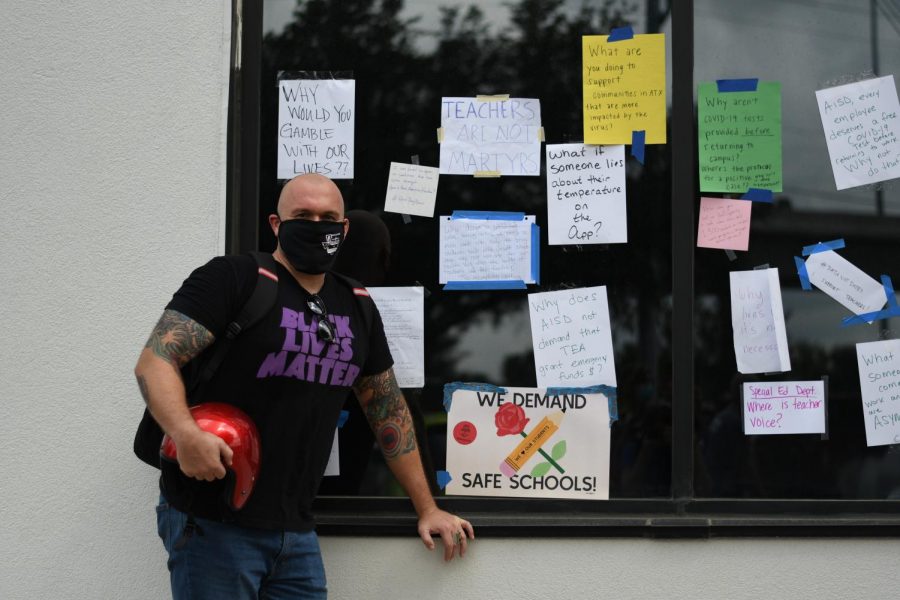
“We are working harder than we actually work going to school to construct all this [online curriculum] and to keep up with it,” Bucher said. “It’s incredibly time-consuming, and they want us to be in a class monitoring students and keeping up with all that. It’s not going to be possible, so it’s going to reduce the quality of the curriculum.”
With the district holding strong to the Oct. 5 reopening date, most educators are recommending that for the safety and benefit of everyone, students should remain at home.
“We should continue, except for the most at risk students who need face-to-face interaction, [with at-home learning],” Bucher said. “I understand that we have to go back eventually, but what is this accomplishing? If your student can stay at home, stay at home. [Students] are going to value at-home [learning] way more than online in a tiny box.”
This story was originally published on The Shield Online on October 4, 2020.





























![IN THE SPOTLIGHT: Junior Zalie Mann performs “I Love to Cry at Weddings,” an ensemble piece from the fall musical Sweet Charity, to prospective students during the Fine Arts Showcase on Wednesday, Nov. 8. The showcase is a compilation of performances and demonstrations from each fine arts strand offered at McCallum. This show is put on so that prospective students can see if they are interested in joining an academy or major.
Sweet Charity originally ran the weekends of Sept. 28 and Oct. 8, but made a comeback for the Fine Arts Showcase.
“[Being at the front in the spotlight] is my favorite part of the whole dance, so I was super happy to be on stage performing and smiling at the audience,” Mann said.
Mann performed in both the musical theatre performance and dance excerpt “Ethereal,” a contemporary piece choreographed by the new dance director Terrance Carson, in the showcase. With also being a dance ambassador, Mann got to talk about what MAC dance is, her experience and answer any questions the aspiring arts majors and their parents may have.
Caption by Maya Tackett.](https://bestofsno.com/wp-content/uploads/2024/02/53321803427_47cd17fe70_o-1-1200x800.jpg)
![SPREADING THE JOY: Sophomore Chim Becker poses with sophomores Cozbi Sims and Lou Davidson while manning a table at the Hispanic Heritage treat day during lunch of Sept 28. Becker is a part of the students of color alliance, who put together the activity to raise money for their club.
“It [the stand] was really fun because McCallum has a lot of latino kids,” Becker said. “And I think it was nice that I could share the stuff that I usually just have at home with people who have never tried it before.”
Becker recognizes the importance of celebrating Hispanic heritage at Mac.
“I think its important to celebrate,” Becker said. “Because our culture is awesome and super cool, and everybody should be able to learn about other cultures of the world.”
Caption by JoJo Barnard.](https://bestofsno.com/wp-content/uploads/2024/01/53221601352_4127a81c41_o-1200x675.jpg)






